Do you want to reduce your city’s energy bills and move towards a more sustainable future? Read on to find out more about this innovative and low-cost approach to energy production!
Solar lighting’s energy efficiency and cost-effectiveness
Solar lighting is becoming increasingly popular due to its energy efficiency and cost-effectiveness. Here’s an overview of how solar lighting works and its benefits:
1. Energy Efficiency: Solar lights use solar cells to convert sunlight into electricity, which is then used to power the light. This process is highly efficient and sustainable, as it relies on renewable solar energy. The conversion efficiency of solar panels is generally around 15% to 19%, though in theory, the efficiency of silicon solar panels can reach up to 25% .
2. Cost-Effectiveness: Solar lights are now more cost-effective than many traditional, grid-powered systems. This is due to the low installation and energy costs associated with solar lights. In fact, the incremental cost-effectiveness ratio for solar lighting intervention was found to be $2025.72 US dollars per quality adjusted life year gained . Plus, solar lights can dramatically reduce or even eliminate your electricity bills, with an average savings of $1,346 annually on energy bills by going solar .
3. Other Advantages: Besides being energy-efficient and cost-effective, solar lights also offer other advantages. They’re easy to install and virtually maintenance-free. Moreover, they’re environmentally friendly and sustainable, making them a great choice for those looking to reduce their carbon footprint .
4. Market Growth: The market for solar lighting systems is growing, thanks to these benefits. Solar lights are identified as one of the most effective of all renewable energy sources, leading to increased opportunities in the market .
In conclusion, solar lighting is a promising technology that offers significant benefits in terms of energy efficiency, cost-effectiveness, and environmental impact. With ongoing advancements in solar technology, we can expect solar lighting to become even more efficient and affordable in the future.
Types of solar lighting best suited for cities
1. Solar Street Lights: Perhaps the most common type of solar lighting in cities, solar street lights provide illumination for streets, sidewalks, and other public spaces. They’re self-contained units that can provide reliable lighting without the need for traditional power sources.
2. Solar Parking Lot Lights: These lights can be installed in parking lots to provide security and visibility at night. They can often be programmed to turn on at dusk and turn off at dawn, or use motion sensors to conserve energy when the lot is empty.
3. Solar Pathway Lights: These are smaller lights often used in parks, along walkways, or in gardens. They’re typically easy to install and can create a pleasant ambiance as well as enhance safety.
4. Solar Flood Lights: For areas that require more intense light, such as sports fields or large public areas, solar flood lights can provide powerful illumination. Some models are equipped with motion sensors and can be a good choice for enhancing security.
5. Solar Sign Lights: These are designed to illuminate signs and billboards. They help ensure that important information can be seen even at night.
6. Solar Deck Lights: Commonly used in public outdoor seating areas, these lights add a warm, inviting glow and increase visibility and safety.
Each type of solar light has its own advantages and is suited to different applications. When choosing solar lighting for a city, it’s important to consider factors like the local climate (to ensure the solar panels receive enough sunlight) and the specific lighting needs of each area.
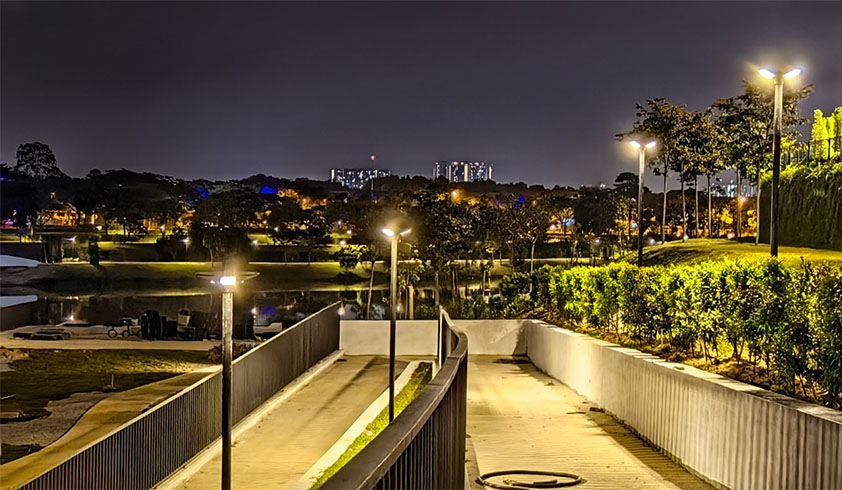
Steps cities can take to start using solar lighting
1. Determine areas to be illuminated: First, the city needs to determine which streets or public areas need to be fitted with solar streetlights. This can be done through site visits and data analysis.
2. Design and planning: the city then needs to design and plan the solar lighting system. This includes selecting the right model of solar lights, determining where to install them, and developing a detailed implementation plan.
3. Installation and testing: Once the design and planning is complete, the city can begin purchasing the equipment and installing it. Once the installation is complete, testing needs to be done to ensure that all equipment is working properly.
4. Education and outreach: In order to encourage more people to use solar energy, cities can also conduct education and outreach campaigns. For example, online information platforms can be used to explain the benefits of solar energy to community members and dispel their misconceptions about solar energy.
In addition, some cities have demonstrated that solar lighting can be used not only for streets and public areas, but also to support commercial and community development. And, as long as there is enough sunlight, solar streetlights can be installed on any street, whether it’s a busy city street or a remote rural area.
Advantages of installing solar lights in urban areas
Installing solar lights in urban areas comes with a multitude of advantages:
1. Positive Environmental Impact: Solar lights use renewable energy from the sun, which helps to reduce carbon emissions and combat climate change. They are a clean, green, and sustainable lighting solution.
2. Smarter Technology: Many solar lights come equipped with smart features like motion sensors and automatic on/off functionality. This can enhance the efficiency and effectiveness of urban lighting systems.
3. Cost-Effectiveness: While there may be an initial investment, solar lights can lead to significant savings over time due to their low maintenance costs and the fact that they don’t rely on grid electricity. This makes them a financially smart choice for cities.
4. Increased Lifespan: Solar lights are durable and have a longer lifespan than conventional lighting solutions. This can result in additional cost savings and less waste in the long run .
5. Improved Community Aesthetics and Safety: High-quality LED lighting from solar lights can enhance the look of urban neighborhoods and improve visibility for pedestrians and drivers. Moreover, they function even during power blackouts, ensuring consistent illumination.
6. Energy Conservation: Solar lights conserve energy by harnessing sunlight during the day and using it to light up streets at night. This reduces reliance on the grid and contributes to energy conservation efforts.
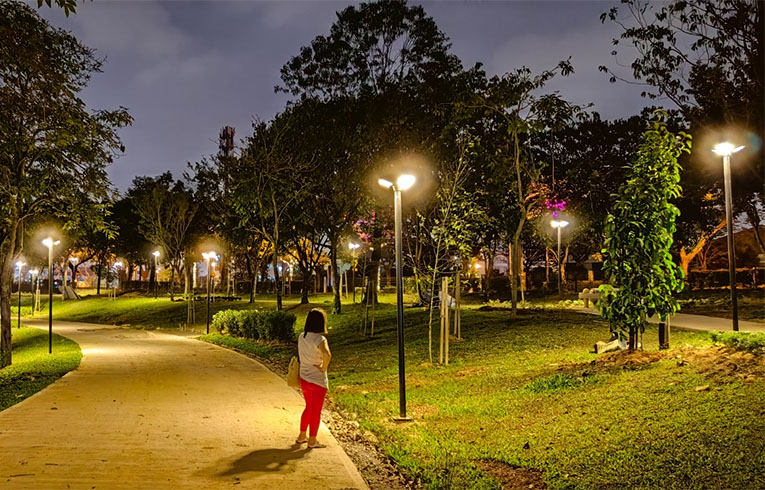
Disadvantages of using traditional street lighting over solar powered alternatives
Pros:
Eco-friendly: Solar street lights use renewable energy, which is harmless to the environment and more environmentally friendly than traditional street lights.
Low maintenance costs: Solar street lights have low maintenance costs. Since there are no external wires, the risk of accidents is minimised. In contrast, traditional street lights require regular replacement of bulbs and wires, which is more costly to maintain.
Energy Saving: Solar street lights do not require additional electricity, which saves energy.
Safety: while traditional street lights may have potential safety hazards due to aging materials, construction quality and power supply issues, solar street lights are safer.
Disadvantages:
High initial installation costs: although solar streetlights have lower long-term maintenance costs, their initial installation costs can be higher than traditional streetlights.
Dependence on sunlight: solar street lights depend on sunlight to work. In conditions where there is a shortage of sunlight or cold temperatures, the utility of solar street lights may be reduced. As a result, you may also need utility-powered lights with motion sensors installed as supplemental lighting.
Structural Integrity Issues: In the solar lighting industry, we see two major issues: lack of wind loading and structural integrity. This can lead to problems.
Examples of successful city-wide solar lighting projects in the US and abroad
Los Angeles: Los Angeles holds the top spot for the highest overall solar power generation capacity. The city has made significant strides in replacing traditional street lights with solar-powered alternatives.
Around House Lighting:https://www.sresky.com/case-and-prejects/around-house-lighting-1/
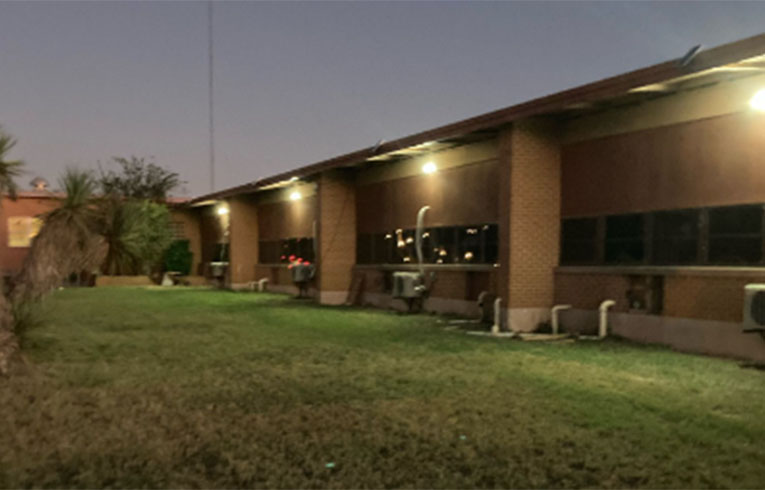
Year
2022
Country
US
Project type
Flood lighting
Product number
SWL-40PRO
Project Background
This is our company’s US partner implementing a lighting project in a local farm. At that time, the original solar lighting equipment outside the farm owner’s house was old and not bright enough, and some of the lamps were damaged and not working properly. In order to improve the lighting effect farm owners decided to replace the lighting equipment. To quickly replace the equipment, solar lights are still the preferred solution for farm lighting. Solar lights do not require wiring, simple installation, installation is complete and ready to use, easy and fast to replace.
Program requirements
1. The size of the lamps is as small as possible. High brightness, adjustable brightness.
2. Good waterproof performance, adapt to complex weather.
3. Can be used normally in the winter temperature angle, summer temperature higher environment.
4. Easy maintenance.
Solution
The farm owner contacted sresky’s local partner in the US through a friend’s recommendation. By communicating the needs of the farm owner, the partner recommended the split design model SWL40PRO solar floodlight.
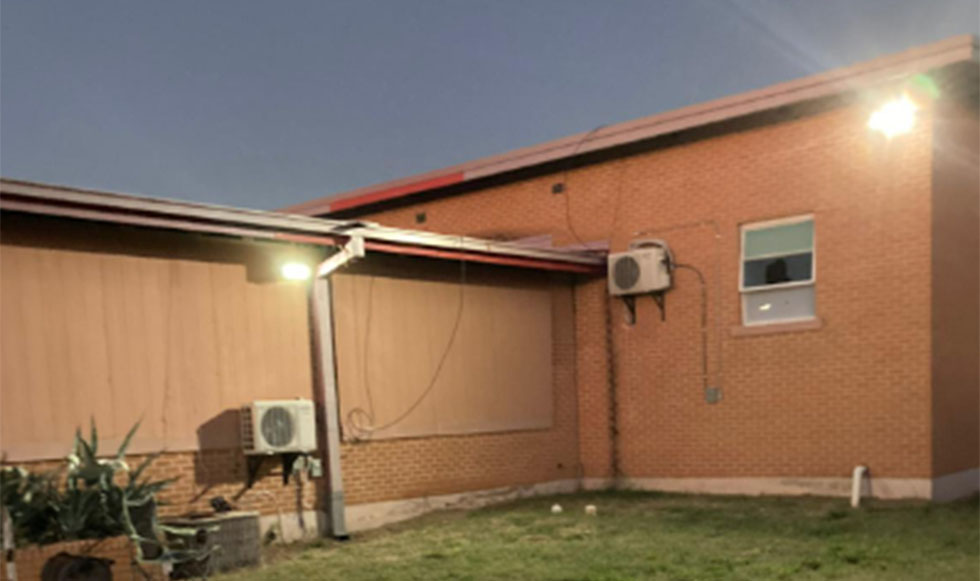
The solar panel and the luminaire can be installed separately, and the partner suggested to install the solar panel on the eaves and the luminaire under the eaves. Solar panels installed on the eaves are more conducive to absorbing sunlight and charging the battery more efficiently. In addition, although the luminaire is IP65 level waterproof, the waterproof performance is better, but installing the luminaire under the eaves can better reduce the impact of complex weather environment on the luminaire.

The SWL40PRO solar floodlight uses LED beads, with higher luminous efficiency and longer service life. The brightness of the luminaire can reach 6000 lumens, with a three-step midnight mode and three optional light-up modes, which can meet different brightness requirements. In addition, the luminaire applies sresky’s self-developed TCS technology, which can be used normally in -20°~+60° environment. ALS technology can keep the lighting time of the luminaire even in extreme bad weather.
Las Vegas: Known for its bright lights, Las Vegas also makes use of solar energy. The city has a number of solar-powered street lights and is continually looking to expand their usage.

Year
2018
Country
USA
Project type
Solar Landscape Light
Product number
SLL-10N
Project Background
Somewhere in the United States, a beautiful seaside walkway attracts thousands of visitors every day. However, at night, the lights are too dim, causing great inconvenience to visitors. The local government wanted to improve the situation, so it planned to purchase a lighting device. However, this trail is located in the seaside, the environment is more complex, the traditional way of electricity supply is difficult to meet the demand. In addition, the local sunlight is good, the use of solar lamps can not only save energy, but also very environmentally friendly. Therefore, the local decided to introduce solar landscape lighting.
Program requirements
1. The luminaire can provide sufficient lighting to provide a safe and comfortable nighttime environment for the seaside walkway.
2. Meet the relevant safety standards and quality standards, the lamps and lanterns are safe and stable to use.
3. The appearance design of the lamps and lanterns should be beautiful and coordinated with the environment around the seaside walkway.
4. The luminaires are of good quality and do not require frequent maintenance.
Solution
In order to meet the above requirements, the local place chose sresky’s solar landscape light, model SLL-10N. SLL-10N solar landscape light is European retro style, which is a lighting fixture especially suitable for parks, gardens and courtyards. Likewise, SLL-10N is also very suitable for seaside walkways.
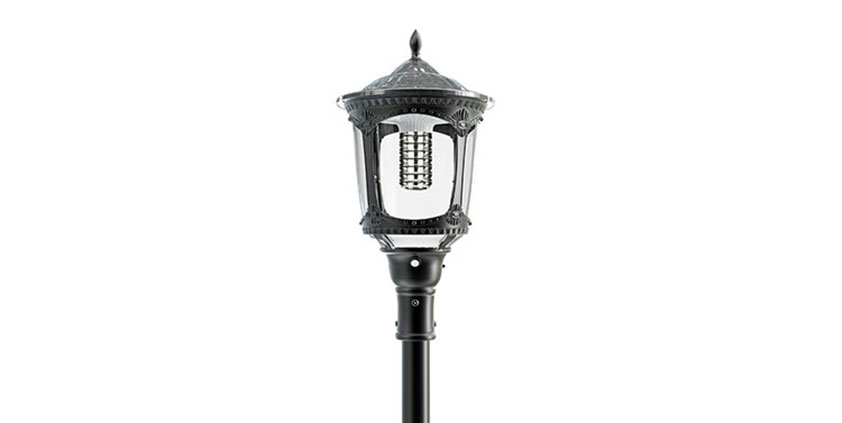
SLL-10N can reach 3000 lumens with three brightness modes available (M1: 15% + PIR. M2: 30% 5h + 15% (PIR ALS2.4) till dawm. M3: 35% till dawm), so you can choose the right brightness according to different lighting needs.
The appearance of SLL-10N is European retro style, which not only has its own ornamental value, but also matches well with the environment of the seaside walkway, increasing the ornamental nature of the walkway.
SLL-10N can automatically light up when it’s dark, and automatically turn off the light when it’s light to charge, which is very convenient to manage. In addition the lamps also have PIR function, detecting the movement of people or objects automatically increase to 100% brightness, providing sufficient lighting, while also saving power.
In addition, SLL-10N as outdoor lighting fixtures, fully meet the standards of outdoor lighting, safe and reliable. The luminaire is waterproof up to IP65 level and has very good anti-corrosion performance.
In terms of quality, sresky lamps and lanterns always insist on using high quality materials, so the quality of the lamps and lanterns is better compared with other lamps and lanterns, and the service life is longer and rarely needs maintenance.
Conclusion
All this demonstrates why solar lighting has become one of the most sought after solutions for smart cities of the future. If you’re interested in solar lighting, reach out to us here at SRESKY ! Our team of product managers are highly knowledgeable when it comes to professional sourcing solutions for your city’s needs. Let’s work together towards a brighter tomorrow! Contact our product managers for more professional sourcing solutions!
Table of Contents